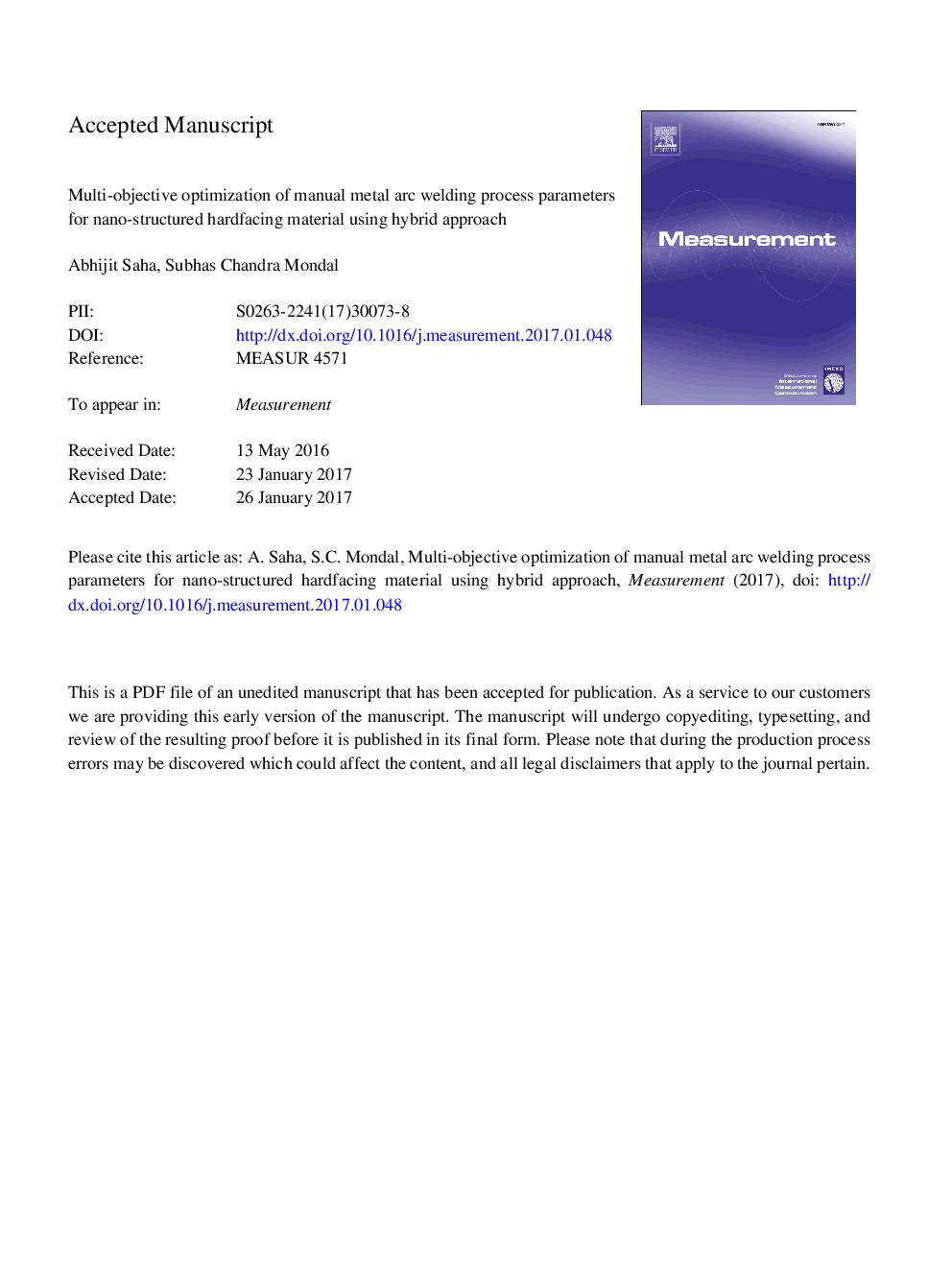| Article ID | Journal | Published Year | Pages | File Type |
|---|---|---|---|---|
| 5006789 | Measurement | 2017 | 28 Pages |
Abstract
In the manufacturing industries, welding assisted hardfacing attracted increasing attention for its effective protection against corrosion, thermal shock and abrasion. The presence of nano-particles in hard confronting materials fundamentally upgraded surface to volume proportion appropriately. Moreover, it enhances conductivity, hardness, and wear resistant properties. This paper introduces the multi-objective optimization of manual metal arc welding (MMAW) process parameters. The paramount process variables such as welding current, arc voltage and welding speed have been considered to undergo experiments. The response parameters consider weld bead width, reinforcement and bead hardness. Taguchi's (L25) orthogonal array has been utilized to perform the trial runs. The S/N ratio of Taguchi design is applied to identify optimal parameter settings for the lower bead width which corresponds to welding current of 160Â A, arc voltage of 17Â V and welding speed of 40Â mm/min. Similarly, for the higher reinforcement, it corresponds to welding current of 150Â A, arc voltage of 25Â V and welding speed of 30Â mm/min and for bead hardness, welding current of 140Â A, arc voltage of 19Â V and welding speed of 40Â mm/min. Moreover, multi-objective optimization was performed using a hybrid approach combining TOPSIS (Technique for order preference by similarity to ideal solution) with PCA (principal component analysis) to identify optimal process parameters. Moreover, TOPSIS-AHP (Analytical hierarchy process) methodologies were used to compare the results with the TOPSIS-PCA. Finally, optimal settings of the input welding parameters correspond to A5V2S1 namely; welding current 160Â A (level 5), arc voltage 19Â V (level 2) and welding speed 20Â mm/min (level 1).
Keywords
Related Topics
Physical Sciences and Engineering
Engineering
Control and Systems Engineering
Authors
Abhijit Saha, Subhas Chandra Mondal,
